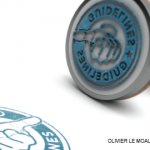Hip & Knee OA Recommendations
Exercise was the top recommendation for hip and knee OA, said voting panelist Daniel K. White, PT, ScD, MSc, assistant professor, Department of Physical Therapy at the University of Delaware, Newark, who urged audience members to stand up from their chairs and stretch.
“It’s no surprise that exercise is a very strong recommendation. There is a large body of evidence to support exercise, and there is a wide range of options for patients,” said Mr. White, who added that more evidence exists on exercise’s benefits for knees than hips. Walking is not only the most common exercise performed by active older adults, but highly beneficial at increasing overall physical activity.3,4
Evidence for the benefits of exercise includes a 2014 study that showed 6,000 steps a day, even performed in non-consecutive bouts of movement, can prevent functional limitation in people with knee OA.5 “If you walk in a purposeful manner, you will reach 100 steps per minute. That’s not a stroll, but it’s not a rush-to-the-bathroom pace either. It’s a comfortable walking pace that most people will reach, including people with knee osteoarthritis,” said Mr. White.
Muscle strengthening exercises of moderate or greater intensity should be performed at least twice a week by adults, according to the 2018 Physical Activity Guidelines, Second Edition.6 Rheumatologists should provide specific exercise recommendations to OA patients, including goals to reach, such as steps or walking minutes per day, Mr. White suggested.
Several strong recommendations for hip and knee OA in the new guideline were conditional in 2012: weight loss for overweight and obese patients; self-efficacy and self-management programs; mind-body interventions, such as tai chi; assistive and supportive devices; and tibiofemoral knee braces.7
Don’ts
For improved outcomes related to hip and knee OA, the new guideline includes conditional recommendations against modified shoes, lateral and medial wedged insoles, massage therapy, manual therapy with exercise and pulsed vibration therapy, and a strong recommendation against the use of transcutaneous electrical stimulation (TENS).
Susan Bernstein is a freelance journalist based in Atlanta.
References
- Hochberg MC, Altman RD, April KT, et al. American College of Rheumatology 2012 recommendations for the use of nonpharmacologic and pharmacologic therapies in osteoarthritis of the hand, hip, and knee. Arthritis Care Res. 2012 Apr;64(4):465–474.
- DeMott L. Novel isometric exercises for the dynamic stability programs for thumb carpal metacarpal joint instability. J Hand Ther. 2017 Jul–Sep;30(3):372–375.
- Yusuf HR, Croft JB, Giles WH, et al. Leisure-time physical activity among older adults: United States, 1990. Arch Intern Med. 1996 Jun 24;156(12):1321–1326.
- Bravata DM, Smith-Spangler C, Sundaram V, et al. Using pedometers to increase physical activity and improve health: A systematic review. JAMA. 2007 Nov 21;289(19):2296–2304.
- White DK, Tudor-Locke C, Zhang Y, et al. Daily walking and the risk of incident functional limitation in knee osteoarthritis: An observational study. Arthritis Care Res. 2014 Sep; 66(9):1328–1336.
- Physical Activity Guidelines for Americans, Second Edition. Washington, D.C.: U.S. Department of Health and Human Services; 2018
- Wang C, Schmid CH, Hibberd PL, et al. Tai chi is effective in treating knee osteoarthritis: A randomized controlled trial. Arthritis Rheum. 2009 Nov 15;61(11):1545–1553.


